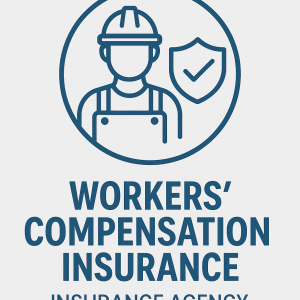
Workers’ Comp Insurance for GA Administrative Services Orgs
July 27, 2025
Fire Watch Guards and Hot Work Sites: Workers’ Comp Requirements Decoded
July 27, 2025As the landscape of workforce management continues to evolve,personnel agencies face increasing scrutiny regarding workers’ compensation insurance costs. Understanding the 2024 workers’ comp rates is essential for these agencies to effectively manage risk, ensure compliance, and maintain competitiveness. This article provides a complete overview of the current trends and factors influencing personnel agency workers’ comp rates in 2024, offering valuable insights to help industry professionals navigate this critical aspect of operational budgeting and risk management.
Table of Contents
- Personnel Agency Workers Comp Rates Trends and Market Drivers in 2024
- Analyzing Risk Factors Influencing Workers Compensation Costs for Personnel Agencies
- strategies for Managing and Reducing Workers Comp Premiums in the Personnel Staffing Sector
- Best Practices for Compliance and claims Management to Optimize Workers Compensation Outcomes
- Q&A
- Concluding Remarks
Personnel Agency Workers Comp Rates Trends and Market Drivers in 2024
Key market drivers impacting rates this year include:
- Rising claim severity: More complex and costly injuries are leading to higher loss ratios.
- Labor market volatility: Frequent workforce turnover increases underwriting risks.
- Technological advancements: Enhanced data analytics allow carriers to tailor rates more precisely.
- Regulatory changes: new state laws are affecting claim handling and employer obligations.
| Industry Segment | 2024 Rate Change | Primary Driver |
|---|---|---|
| Healthcare Staffing | +7% | Increased injury complexity |
| Manufacturing Temps | +5% | Higher claims frequency |
| IT & Office Support | +2% | Stable risk profile |
| Construction Labor | +8% | Regulatory impacts |
Analyzing Risk Factors Influencing Workers Compensation Costs for Personnel Agencies
Agencies can proactively manage their insurance expenses by closely monitoring these risk elements. Implementing rigorous employee safety training, cultivating a culture of workplace safety, and collaborating with insurers to develop tailored loss control programs frequently enough lead to measurable cost savings. below is a simplified overview of primary risk factors and their typical influence on premium adjustments:
| Risk Factor | Impact on Premium | Mitigation Strategies |
|---|---|---|
| Job Classification | High | Reassign lower-risk roles or customize job duties |
| Claims History | Moderate to High | Implement safety programs and early return-to-work policies |
| workplace Safety Measures | Variable | Regular safety audits and employee training |
| Employee Training | Moderate | Comprehensive orientation and skill advancement |
Strategies for Managing and Reducing Workers Comp Premiums in the personnel Staffing Sector
Leveraging data-driven methods such as detailed claims analysis and predictive risk modeling enables agencies to identify high-risk assignments and adjust placement strategies accordingly. Collaborating closely with insurance providers to implement early return-to-work programs and tailored health initiatives enhances recovery outcomes for injured workers, directly contributing to premium savings. consider the following tactics:
- Regular Safety Audits: Routinely evaluate client sites to ensure safety standards are met.
- Employee Screening: Place workers in roles matching their skill sets to prevent injuries.
- Claims Management: Promptly address and document incidents to reduce claim severity.
Best Practices for Compliance and Claims Management to Optimize Workers Compensation Outcomes
Effective claims management also depends on early intervention strategies designed to support employee recovery and return-to-work initiatives. Implementing a structured approach that includes:
- Immediate medical evaluation and treatment coordination
- Regular case reviews by dedicated claims managers
- Strategic use of modified duty programs
These elements ensure not only compliance but also cost containment, resulting in optimized workers’ comp rates. The following table illustrates key performance indicators (KPIs) that agencies should monitor for sustained improvement:
| KPI | Target Metric | Impact on Outcomes |
|---|---|---|
| Claim Filing Time | Within 24 hours | Reduces delays and claim disputes |
| Return-to-Work Rate | 80% within 3 months | Lowers benefit costs and improves morale |
| Compliance Training frequency | Quarterly | Mitigates regulatory risks |
Q&A
Q&A: Personnel Agency Workers’ Comp Rates 2024
Q1: What are workers’ comp rates for personnel agencies in 2024?
A1: Workers’ compensation rates for personnel agencies in 2024 reflect updated industry risk assessments, medical cost trends, and regulatory changes. While exact rates vary by state and insurer,many agencies can expect moderate rate adjustments compared to 2023,influenced primarily by claims experience and labor market conditions.
Q2: Why do workers’ comp rates for personnel agencies change annually?
A2: Rates vary year-to-year due to factors such as changes in claim frequency and severity, evolving medical costs, shifts in regulatory requirements, and economic conditions. Personnel agencies may also see fluctuations based on the specific job classifications of their workforce and employer-specific loss history.
Q3: how does the classification of workers impact personnel agency workers’ comp rates?
A3: Classification codes assigned to different job roles determine risk levels and premium calculations. Personnel agencies frequently enough employ workers in multiple classifications, from clerical staff with lower risk to industrial or manual labor roles with higher risks. Accurate classification ensures appropriate rate request and compliance with insurance regulations.
Q4: What factors should personnel agencies consider to manage workers’ comp costs effectively?
A4: Agencies should focus on maintaining a strong safety culture, implementing effective risk management practices, and ensuring accurate payroll reporting. Additionally, controlling claim frequency and severity through proactive employee training and injury prevention can help reduce premiums. Working closely with brokers to review policy terms and shop competitively can also yield cost benefits.
Q5: How do state regulations impact workers’ comp rates for personnel agencies?
A5: Workers’ comp systems are state-regulated, and each state sets its own rate-making framework, benefits, and compliance standards. Personnel agencies operating in multiple states must navigate differing rate structures and legal requirements, which can effect overall insurance costs and coverage needs.
Q6: Are there emerging trends in workers’ comp for personnel agencies in 2024?
A6: Yes, 2024 sees continued emphasis on integrating data analytics for risk assessment, increased attention to mental health and ergonomics in workers’ comp claims, and the rise of remote and hybrid work influencing risk profiles. Additionally, evolving workforce demographics and technological advances in claims management are shaping insurer strategies.
Q7: What steps can personnel agencies take for a smooth renewal process in 2024?
A7: Agencies should begin early by reviewing prior year claims and loss runs, correcting payroll and classification data, updating safety records, and collaborating with brokers to negotiate favorable terms. Proactive communication with insurers about workforce changes or new service lines can prevent surprises and facilitate tailored rate offerings.
Q8: Where can personnel agencies get reliable facts on workers’ comp rates and compliance?
A8: Agencies should consult state workers’ compensation boards, industry associations, licensed insurance brokers specializing in workers’ comp, and reputable insurance carriers. Staying informed through these sources ensures compliance and enables informed decision-making regarding coverage and cost management.
Concluding Remarks
understanding the trends and factors influencing personnel agency workers’ compensation rates in 2024 is essential for agencies aiming to manage risk and control costs effectively. Staying informed about regulatory changes, classification adjustments, and industry-specific claims data will empower agencies to secure competitive rates and ensure compliance. By proactively addressing these elements, personnel agencies can maintain financial stability while prioritizing the safety and well-being of their workforce in the year ahead.
“This content was generated with the assistance of artificial intelligence. While we strive for accuracy, AI-generated content may not always reflect the most current information or professional advice. Users are encouraged to independently verify critical information and, where appropriate, consult with qualified professionals, lawyers, state statutes and regulations & NCCI rules & manuals before making decisions based on this content.







